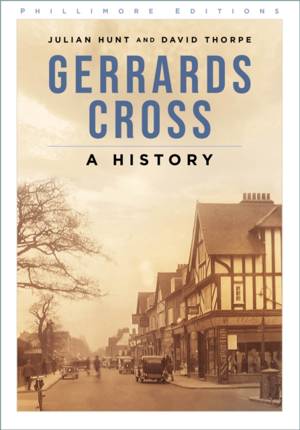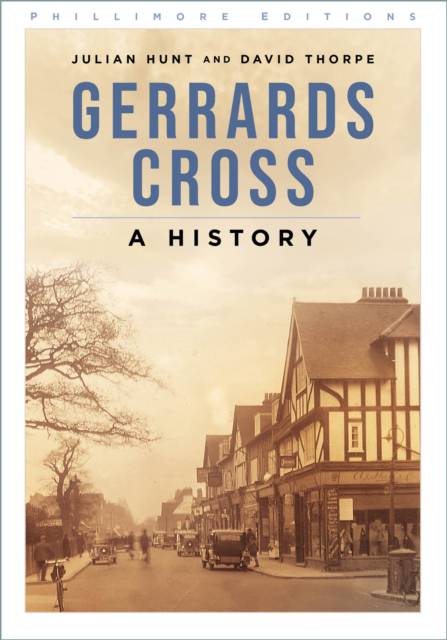
- Retrait gratuit dans votre magasin Club
- 7.000.000 titres dans notre catalogue
- Payer en toute sécurité
- Toujours un magasin près de chez vous
- Retrait gratuit dans votre magasin Club
- 7.000.0000 titres dans notre catalogue
- Payer en toute sécurité
- Toujours un magasin près de chez vous
Description
Gerrards Cross, with its fine open common and picturesque Latchmore Pond, has been a place of resort ever since the Old Berkeley Hunt began to meet there in the 1790s. Genteel houses sprang up around the Common and St James's Church was built on the Oxford Road. By the 1860s, Gerrards Cross was attracting so many wealthy visitors that it began to be known as 'the Brighton of Bucks'. The opening of the Great Western and Great Central Joint Railway in 1906, with a station at Gerrards Cross, gave hundreds of Londoners the opportunity to live in 'Beechy Bucks'.
Several gifted young architects, including Stanley Hamp and Robert Muir, moved into the area in 1906. The leading firm, however, was Kerkham, Burgess and Myers, which designed the iconic shops and offices in Station Parade in 1907. The new houses had to be built, of course, and several firms, the most successful of which being Y.J. Lovell & Son of Marlow, whose Gerrards Cross branch became an international construction firm, were involved. The 'Lovell House' was the centrepiece of successive pre-war Ideal Home Exhibitions. The new homes were marketed by firms including Hampton and Sons and A.C. Frost, both still leading estate agents in Buckinghamshire today.
This book celebrates the energy and imagination of those pioneer architects, builders and estate agents who made Gerrards Cross a high-class residential area, both socially and architecturally. It also applauds the entrepreneurs who offered their services when commuter houses were still on the drawing board, and the newcomers who brought their families to live in the country and depended utterly on their train service to London.
Several gifted young architects, including Stanley Hamp and Robert Muir, moved into the area in 1906. The leading firm, however, was Kerkham, Burgess and Myers, which designed the iconic shops and offices in Station Parade in 1907. The new houses had to be built, of course, and several firms, the most successful of which being Y.J. Lovell & Son of Marlow, whose Gerrards Cross branch became an international construction firm, were involved. The 'Lovell House' was the centrepiece of successive pre-war Ideal Home Exhibitions. The new homes were marketed by firms including Hampton and Sons and A.C. Frost, both still leading estate agents in Buckinghamshire today.
This book celebrates the energy and imagination of those pioneer architects, builders and estate agents who made Gerrards Cross a high-class residential area, both socially and architecturally. It also applauds the entrepreneurs who offered their services when commuter houses were still on the drawing board, and the newcomers who brought their families to live in the country and depended utterly on their train service to London.
Spécifications
Parties prenantes
- Auteur(s) :
- Editeur:
Contenu
- Nombre de pages :
- 176
- Langue:
- Anglais
Caractéristiques
- EAN:
- 9781860773884
- Date de parution :
- 31-12-06
- Format:
- Livre relié
- Format numérique:
- Genaaid
- Dimensions :
- 185 mm x 246 mm
- Poids :
- 660 g

Les avis
Nous publions uniquement les avis qui respectent les conditions requises. Consultez nos conditions pour les avis.






